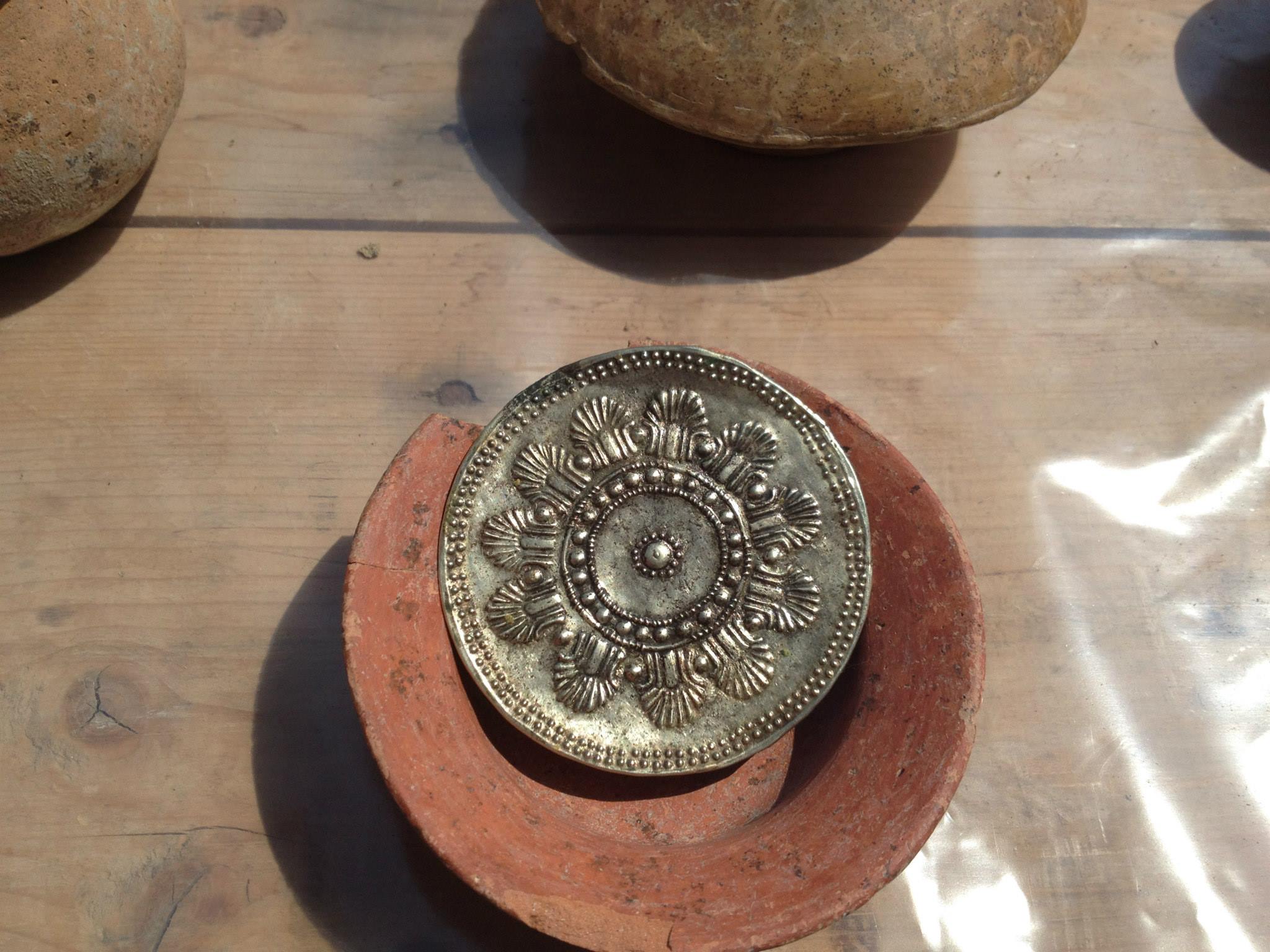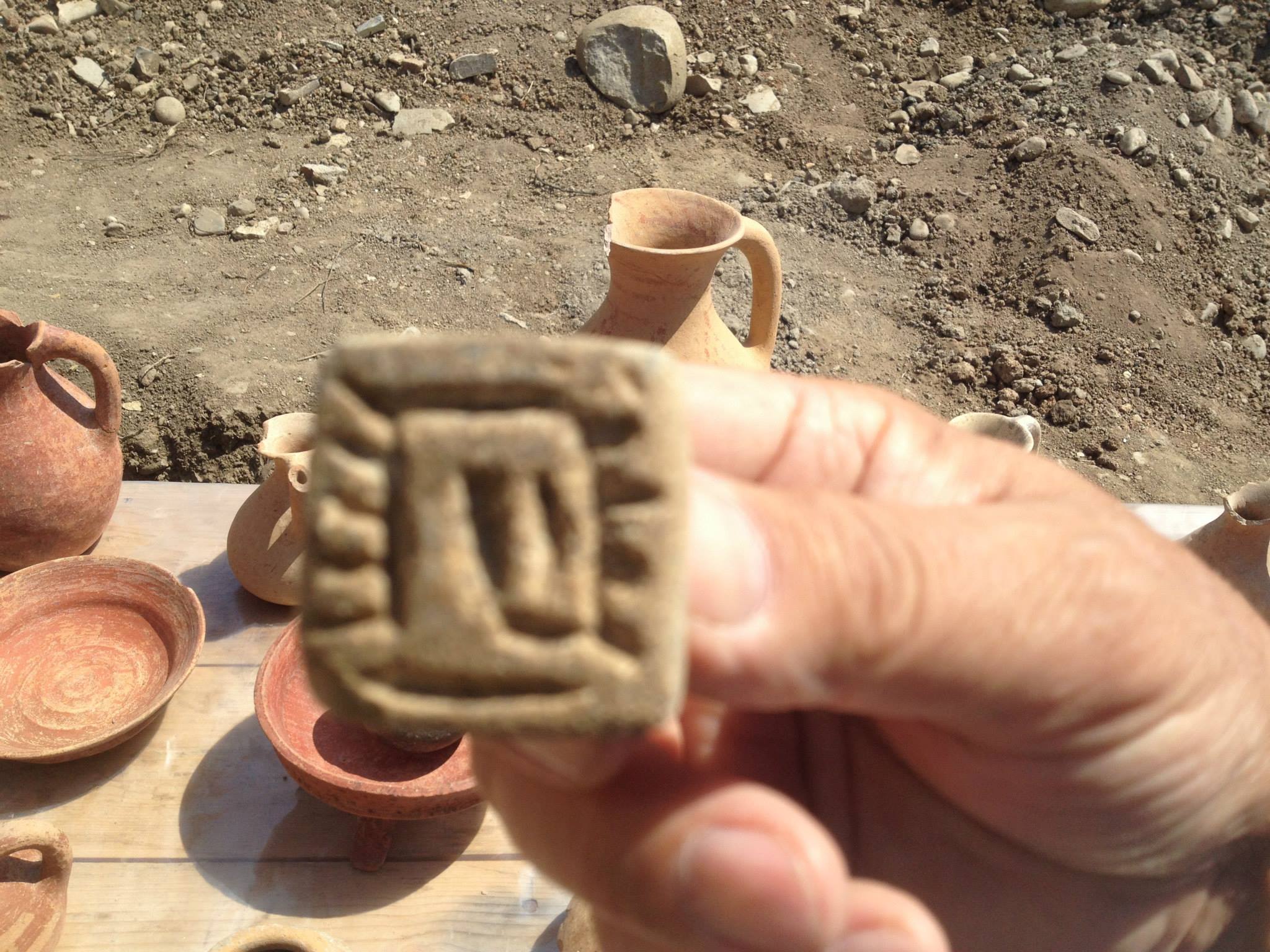Ancient Georgian site becomes outdoor museum

One of Georgia’s most unique archaeological settlements is set to become an outdoor museum and gain the prestigious ‘monument’ status.
Visitors to the ancient settlement and necropolis of Grakliani Hill will be able to enjoy its distinctive features, including multi-layer settlements from different periods in history.
The move to establish the settlement as an open air museum was an initiative that jointly belonged to the National Agency for Cultural Heritage Preservation and Tbilisi State University (TSU).

Fourth century gold plate. The item was discovered in 2011 and its only analogue exists in Susa city, Iran.
The settlement and necropolis of Grakliani Hill is believed to be the only monument of extensive chronology where almost all of the layers of human development, from 4th to the 1st Centuries BC until the period of Christianity, was revealed.
Grakliani Hill is located in Igoeti village, Kaspi region, on the top of a hill that’s situated on the bank of the river Lekhura, near the Tbilisi- Senaki-Leselidze highway.
When work began to widen the highway in 2008, workers uncovered ancient treasures and archeological excavations were conducted on the southern slope of the hill.
Meanwhile excavations of the settlement on the eastern slope and the necropolis on the south-western part of the hill revealed that the site had been occupied between the Chalcolithic and the Late Hellenistic periods.
The most interesting remains of buildings belong to the second and first millennium BC.

An ancient stamp maker, dated back to the 4th century BC, was found in 2010. Its only analogue exists in Uruk, southern Mesopotamia.
An architectural complex consisting of three main rooms and three store-rooms, dating back to around 450-350 BC, was discovered in the western part of the hill’s lower terrace.
Burials from various periods in history were discovered in the western part of the hill's southern slope. The earliest burial site discovered dated back to the Early Bronze Age and was a pit-type burial, while the latest one belonged to the 2nd Century BC.
 Tweet
Tweet  Share
Share